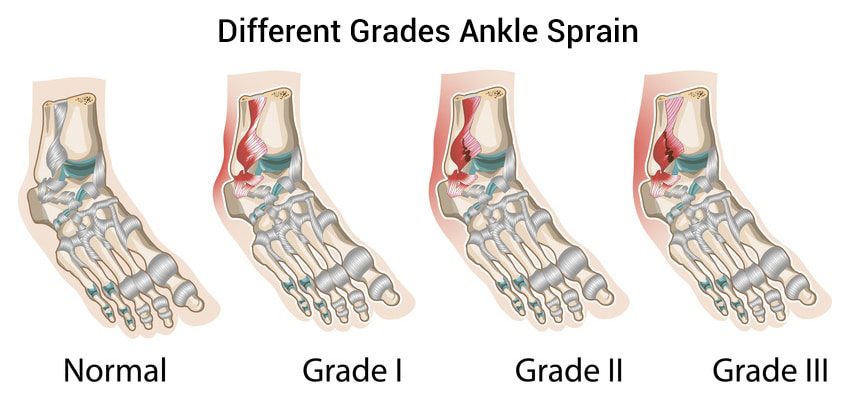Ankle Sprains: Sprained ankle treatment and recovery time

Ankle injuries may also result in a strain as well as a sprain where the muscle or tendon is also affected. It is important to get any ankle injury seen to as soon as possible by a professional who specialises in these injuries.

Grade 1
Grade 2
Grade 3

Make sure to see a physiotherapist for your ankle sprain as soon as possible
If you believe you have fractured your ankle due to your sprain, you should go straight to hospital. If not, you should see a physiotherapist as soon as possible. A physiotherapist will assess your ankle to determine what grade of injury you have had and to what ligaments. They will also assess other structures around the ankle such as the muscles, tendons, joints and nerves to see if any other structures have been affected. A physiotherapist can also refer you for imaging if they believe it is required. Initial rest, ice packs, compression, elevation and gentle ankle movements can help before you see your physiotherapist.
Physiotherapy treatment may include massage, joint mobilisation, compression, taping, moon boot fitting, crutches prescription, ice packs, home exercises and self-management strategies. It is important to follow through with your treatment plan – evidence shows that once you have rolled your ankle, your chances of rolling it again are very high. Your physiotherapist will ensure that they prescribe you with exercises to help reduce your risk of re-injury.
Graceville Physio have experienced clinicians who regularly treat ankle sprains. Give us a call on 3278 1186 to book an appointment or book online today.
Related Tag: Graceville Physio


